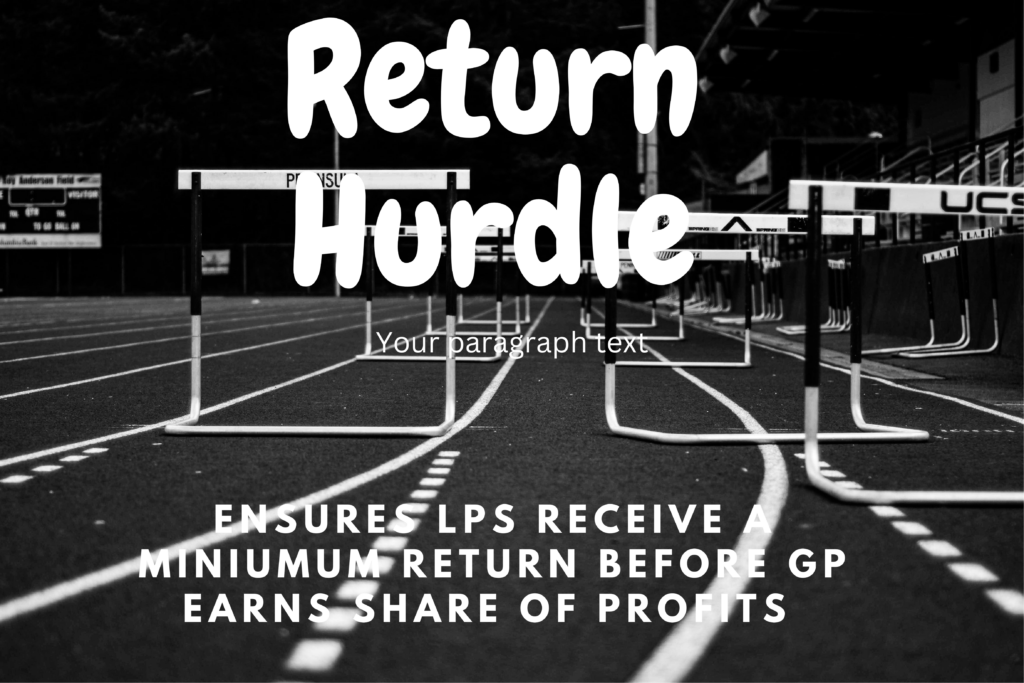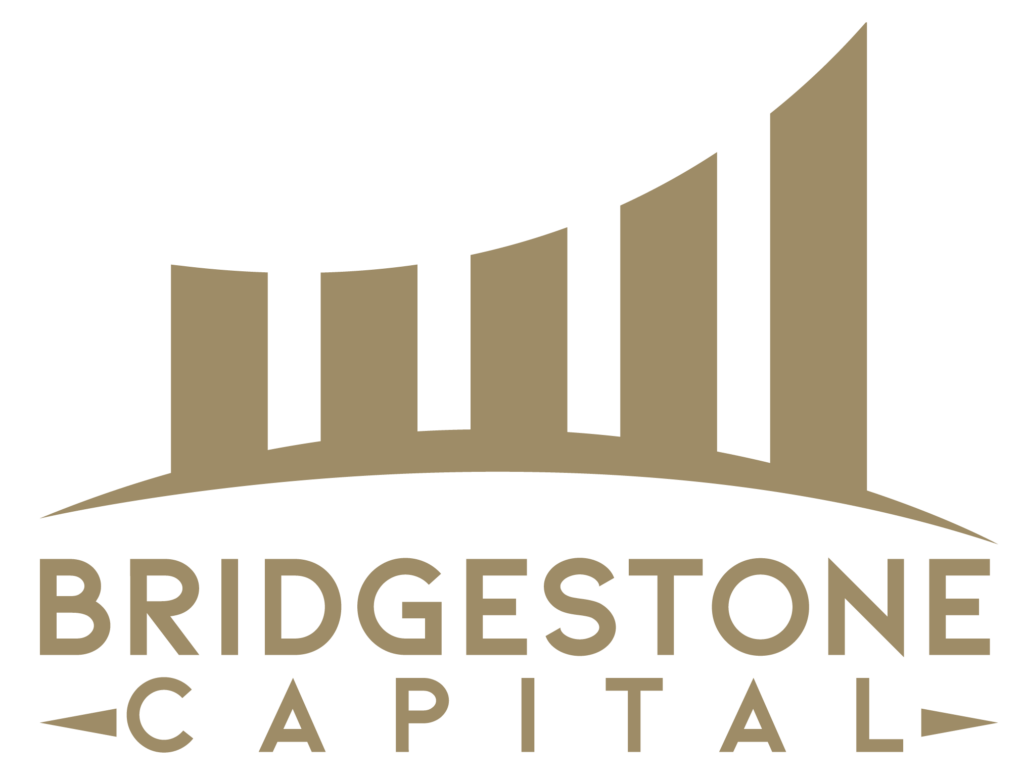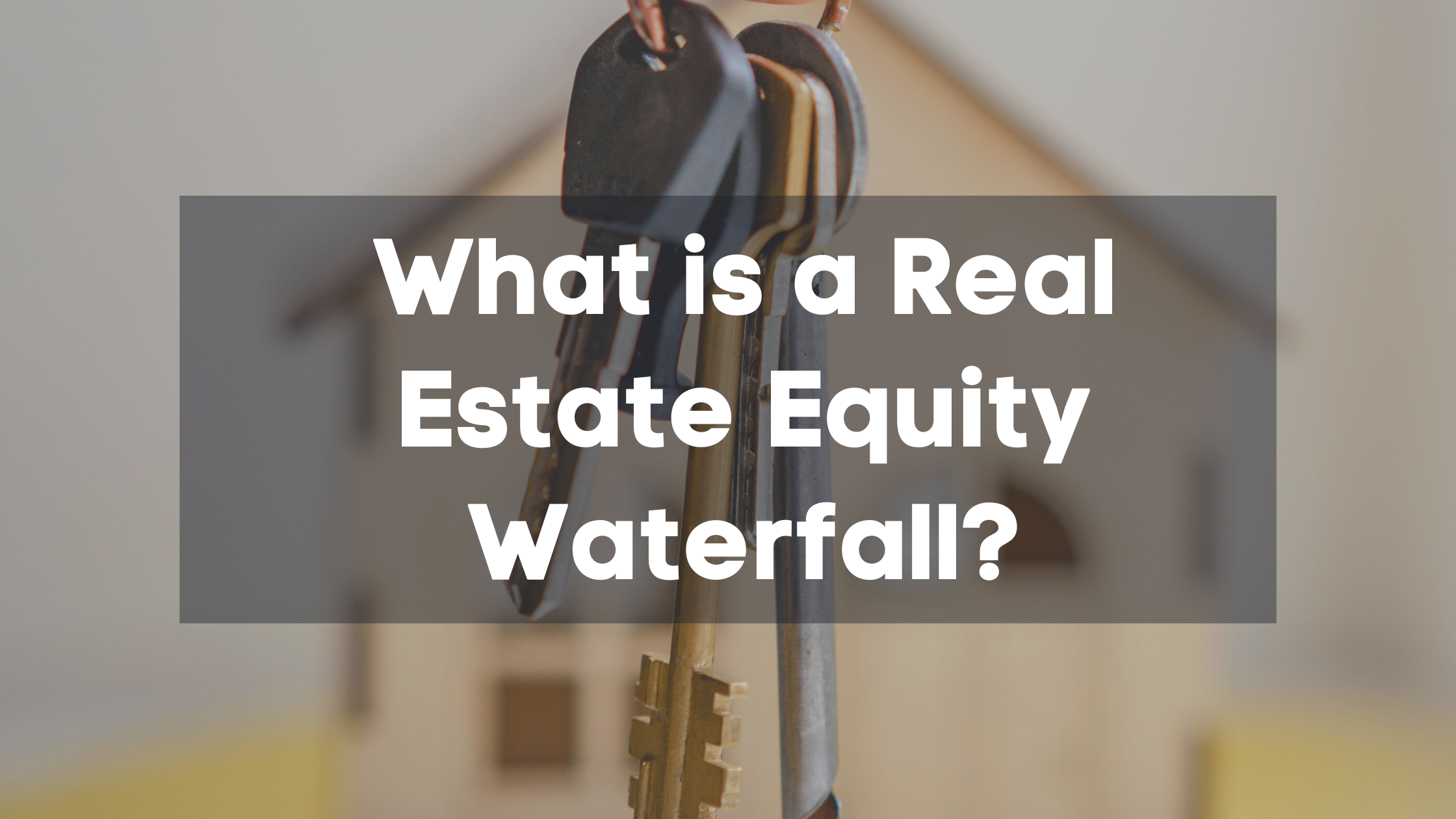How can an investor understand how the equity waterfall model will affect the return on their real estate investment and if it is increasing or mitigating risk?
Due diligence in alternative investments can be complex, and when reviewing commercial real estate syndications, there are many critical factors to consider. While reviewing the dizzying terms and understanding the capital contribution, you want to be thorough in your due diligence to confirm if there is a high degree of risk and what this fund manager’s performance history is.
The distribution waterfall or real estate equity waterfall model is a common model in real estate syndications that gives return hurdles (or IRR Hurdle) that ensure the investor’s return prior to the general partner (or management team) compensation. Although it is common, this model is one of the most difficult concepts and there are several ways to run it with various ways to pay the GP and LP.
First thing, let’s review what is a real estate structure:
Sample Real Estate Partnership Structure
A real estate partnership structure is a joint investment structure in real estate private equity. In a real estate partnership, commonly referred to as a syndication, a group of investors form a partnership and invest in a real estate asset or portfolio. The General Partner manages the partnership and is responsible for the day-to-day management and operations.
A typical real estate partnership structure might look like this:
- Limited Partners (LPs): passive investors in the partnership who provide the capital for the investment. Limited partners do not have any control over the partnership’s day-to-day operations. LPs are typically high net worth individuals seeking to diversify their portfolio into real estate holdings or increase cash flow.
- General Partner (GP): Responsible for the day-to-day management of the assets and the operations of the partnership. The GP is an experienced real estate professional who brings expertise and connections to the partnership. The GP makes investment decisions.
- Hurdle Rate is the return threshold that is met prior to GP earnings. The hurdle rate is set to ensure the limited partners receive a preferred return on their investment before the GP begins to earn their carry.

The waterfall is a structure in real estate to determine how returns are distributed among the different classes of investors.
Examples of Waterfall Designs
In a real estate equity waterfall, a series of return thresholds are established, and returns are distributed to different classes of investors when the return thresholds are met. If the preferred return threshold is met, returns are distributed to the preferred equity investors until they have received their total preferred return. Once the preferred equity investors have received their total preferred return, any other returns are distributed to the ordinary equity investors.
The private equity waterfall ensures that the different classes of investors receive their fair share of returns based on their investment terms. The preferred equity investors receive a priority return, while the equity investors (LPs) share in any residual returns the investment generates.
The Return Hurdle
The return hurdle, also known as the preferred return or the hurdle rate, is a minimum return on investment that must be achieved before distribution of profits. This target rate is usually set as a percentage of the invested capital, and it is designed to ensure that the limited partners receive a minimum return on their investment before the general partner begins to earn its share of the profits.
The return hurdle is a critical component of a private equity investment’s waterfall structure, which is a methodology used to allocate returns and profit distributions among the participants in an investment.
The return hurdle is typically set to a relatively low rate, such as 8-10%, to ensure that the limited partners receive a positive return on their investment before the general partner begins to earn its share of the profits. It is a good practice for an operator to include initial capital as a part of the return hurdle to offer additional risk mitigation in their real estate equity waterfall models.

The Preferred Return
A preferred return, or “preferred yield” or “hurdle rate,” is a minimum rate of return guaranteed to a particular class of investors, such as preferred shareholders, before other investors, such as limited partners, receive any returns on their investments.
The preferred return is typically specified in the investment agreement and is paid out before any other share of the cash flow distributions are made to other individual investors.
In real estate investments, the preferred return compensates first tier investors such as a large private equity fund for the higher risk and larger initial investment they take.
It provides some certainty for the preferred shareholders about the minimum return they will receive on their investment. The Preferred Return trades upside for lower risk, whereas the limited partners trade risk for larger upside returns such as capital gains.
The Promoted Interest
Promoted interest, also known as a “promote” is an incentive compensation structure to compensate general partners (GPs) to earn a share of the profits generated by the investment beyond their management fee.
In a promoted interest structure, the GP earns a share of the profits generated as various equity waterfalls are met. The amount of the promoted interest earned by the GP is proportional to the profits generated above the performance targets.
For example, the GP might earn a 10% promoted interest on profits above a 20% return threshold.
Promoted interest aligns the interests of the GP and the LPs in the investment. By earning a share of the profits generated by the investment, the GP has the correct incentives to maximize returns for all parties involved.
Promoted interest is also a way for GPs to earn additional compensation for exceptional performance.
Who pays for the Promote
Another important consideration is who pays for the promote. In other words, where is this promote percentage applied to?
While this could be structured in a number of ways, it is common to be paid by either the partnership or instead by the investor’s share of cash distributions.
Let’s look at where management would apply the promote percentages:
Promote Calculations
If the partnership pays for the promote, then the sponsor would first get its promote percentage, and then it would get its pro rata share of the remaining partnership cash flow.
The sponsor’s share of cash flow is calculated as follows:
GP Distribution % = Promote % + GP Pro Rata Share x (1 – Promote %)
For example, suppose the GP owns 10% of the partnership and the LP owns 90%. Then, suppose that the GP will earn a 20% promote after a 12% preferred return hurdle is achieved. In this case, the GP Distribution % would be 20% + (10% x 80%), which equals 28%.
If the investor pays for the promote instead of the partnership, the sponsor would first get its pro rata share, then it would get the promote percentage based off the investor’s share of cash flow:
GP Distribution % = GP Pro Rata Share + Promote % x LP Pro Rata Share
We calculate the GP Distribution % is calculated as 10% + (20% x 90%), equals 28% using the above example.
Notice that both of these calculations lead to the same result. The distinction here is the investor would prefer the first scenario in case the sponsor has to be replaced because that means the original sponsor would share in some cost of replacement.
This is a minor detail, but important when considering who the project managers are and what to review on a deal-by-deal basis.
Again, although these are two common ways of calculating the promote, the important thing to remember about waterfall structures is that there is no one size fits all solution. The partnership agreement spells out these terms and conditions.
The Lookback Provision
A lookback provision is a private equity or real estate investment agreement clause that gives the investment manager the option to adjust the preferred return in certain circumstances.
This structure allows the investment manager to “look back” at the performance of the investment over a specified period of time, such as a given year or several years. Suppose the investment has performed better than the preferred return. In that case, the investment manager may adjust the preferred return upward to a higher rate to reflect the higher returns generated. On the other hand, if the investment has performed worse than the preferred return, the investment manager may choose to adjust the preferred return downward to a lower rate to reflect the lower returns generated by the investment.
The lookback provision is included in investment agreements to ensure the preferred return is aligned with the project’s returns generated by the investment. The lookback provides the investment manager with the flexibility to adjust the preferred return to ensure that the investment remains attractive to investors, while also allowing the investment manager to share in the benefits of any outperformance of the investment.
In conclusion, a lookback provision is a clause in an investment agreement that gives the investment manager the option to adjust the preferred return based on the performance of the investment over a specified period of time. Management uses this provision to ensure the preferred return remains aligned with the actual returns generated by the investment.
The Catch-Up Provision
A catch-up provision is a clause in a private equity or real estate investment agreement that allows for the payment of accumulated preferred return in the event of sufficient future investment performance.
In a cumulative preferred return structure, if the investment does not generate sufficient returns to cover the cumulative amount of preferred return that has accrued, the preferred return will accumulate and be paid out at a later date when the investment generates sufficient returns.
The catch-up provision specifies the conditions under which the accumulated preferred return will be paid out, such as a certain level of investment performance or the sale of the investment.
The catch-up provision assures investors that they will eventually receive their accumulated preferred return, even if the investment does not generate sufficient returns in the short-term. It also allows the investment manager to defer the payment of the accumulated preferred return until the investment is in a better position to generate sufficient returns to cover the cumulative amount of preferred return that has accrued.
This article is for informational purposes only and should not be taken as investment advice.

